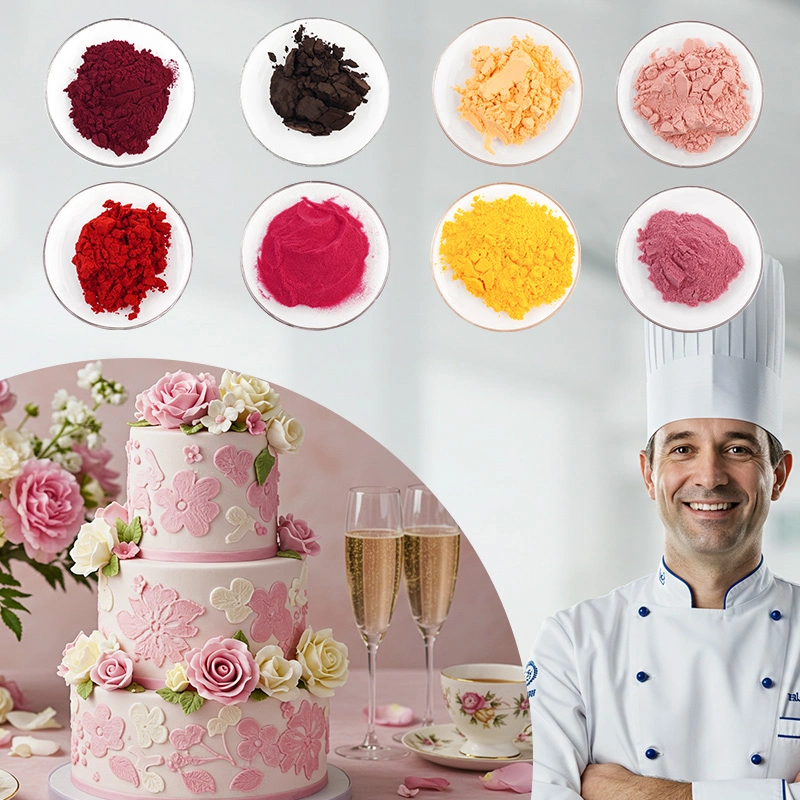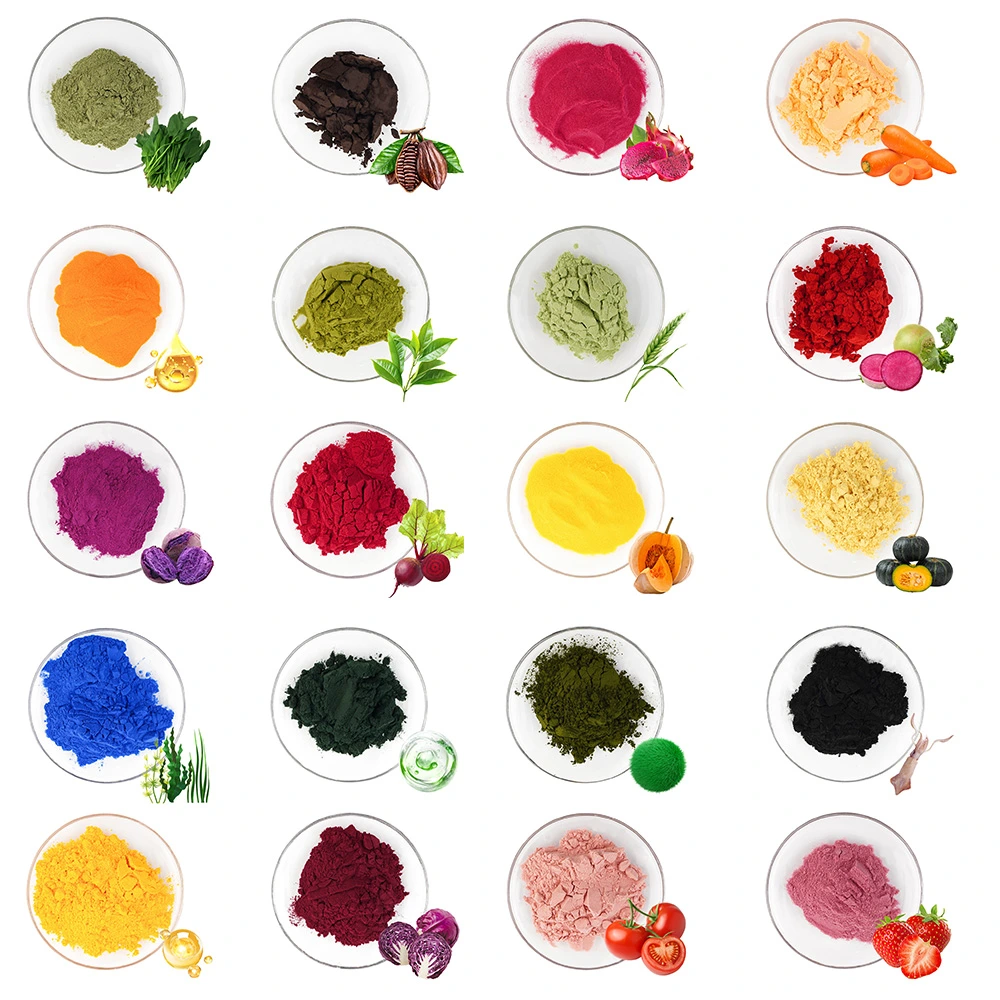
Digging into Natural Food Coloring Powder
What’s the Deal with Natural Food Coloring Powder?
Yo, Natural Food Coloring Powder is a super dope plant-based dust that makes your food and drinks burst with color. It’s pulled from fruits, veggies, herbs, and spices—no gross fake stuff like petroleum dyes. This clean-label champ is a hit with pro bakers for keeping things steady and vibey. It’s clutch for tricky treats like macarons or chocolate coatings where extra liquid is a total buzzkill. Keep your recipes fire without wrecking the texture!
What’s in Your Homemade Color Dust?
Whip up this color magic at home with:
- Beets for blazingred or pink vibes
- Spinach or matcha for crispgreen
- Turmeric for sunshineyellow
- Purple cabbage or blueberries for chillblue and purple
- Carrots or paprika for spicyorange
These are safe to munch and bring insane color to your game.
Why Natural Slays Fake Dyes
Fake dyes are mad sketchy—some studies link them to kids acting wild or getting allergies. Natural Food Coloring Powder is the GOAT:
- Zero chemical junk
- Loaded with antioxidant juice
- Earth-friendly sourcing
- Perfect for clean-labeleats
Whether you’re baking at home or a pastry legend, this powder’s your secret sauce for epic wins.
Snagging the Best Ingredients for Crazy Colors
Fruits and Veggies That Drop Color Bombs
Some plants are pigment beasts:
- Beets: Deep red fire
- Red cabbage: Flips purple to blue with baking soda or vinegar
- Blueberries: Serve royalpurples and blues
- Carrots: Hit with bright orange heat
- Spinach: Keeps it coolwith soft green
These are packed with color, making them prime for powder.
Spices and Herbs for Lit Tones
Spices and herbs bring it with color and flavor kicks:
- Turmeric: Blindingyellow with earthy vibes
- Paprika: Deep orange-red banger
- Matcha: Electricgreen glow
- Saffron: Golden yellow (but costs a fortune)
Herbs like parsley or basil dry into mellow green powders for extra swag.
How to Pick Fresh, Top-Notch Stuff
To score max color:
- Grab organic produce, no pesticide drama
- Pick ripe fruits and veggies at their prime
- Dodge bruised or moldy junk—it messes with color and safety
- Go for whole dried spices, not pre-ground, for killerstrength

Step-by-Step to Making Natural Food Coloring Powder at Home
Getting Your Ingredients Ready to Dry
Prep your color squad:
- Scrub everything under cold water to zap dirt
- Peel beets or carrots if you gotta
- Chop into tiny, even bits for smoothdrying
- Blanch stuff like spinach to lock inbright hues
Drying Hacks to Keep Colors Popping
Dry your goods right to save the sparkle:
- Dehydrator: Low heat keeps colors lit
- Oven: Crank to 120–150°F (50–65°C), leave the door cracked, and peep often
- Air drying: Slow but works in dry zones, best for herbs
Skip sunlight—UV rays trash pigments.
Grinding and Sifting into Mega Fine Dust
When it’s dry:
- Blast it in a spice grinder, coffee grinder, or beast-modeblender
- Sift through a fine mesh to ditch chunky vibes
- Stash prontoin airtight jars away from light
This gets you silky powder for fancy frosting or drink magic.
Storing and Keeping Your Color Powder Fresh
Best Storage Moves for Long-Lasting Vibes
Keep your powder popping:
- Use dark glass or opaque jars with ironcladlids
- Hide in a cool, dry spot, no heat or sunlight
Vacuum-sealed jars block air sneak attacks for max freshness.
How Long It Holds Up and Spoilage Clues
Your powder stays fresh for 6 months to a year if stored tight. Chuck it if you spot:
- Washed-out colors
- Weird, musty stink
- Clumps from moisture creeping
- Mold invading
Slap a make date on jars to keep it real.
Keeping Colors Lit Over Time
To hold that shine:
- Dodge humidity—toss in silica gel packets
- Don’t keep popping jars open, air wrecksit
- Stash small batches for quick grabs
Powder colors are rock-solid and bold, perfect for long-term kitchen clout.
Wild Ways to Use Natural Food Coloring Powder Every Day
Baking, Cooking, and Drink Tricks
This powder owns in food:
- Beetroot powder for red velvet cupcakes, no fake nonsense
- Turmeric in rice like biryani for golden swagger
- Matcha in lattes or smoothies for green lightning
For delicate treats like macarons or meringues, powder keeps textures crisp—liquid colors can tank whipped egg whites.
Note: Oil-based pigments for chocolate; water-soluble (non-pearlized) for cakes, drinks, or macarons; fluorescent powders are for nail art, not food.
DIY Face and Skin Goodies
Take it outside the kitchen:
- Beetroot powder for blush vibes
- Turmeric masks for chillanti-inflammatory skin
- Matcha scrubs with antioxidant power
These are gentle compared to fake dyes in store makeup, perfect for sensitive skin crews.
Crafting and Home Decor Hype
Get crafty with powder:
- Mix into homemade playdough for kid-safecolors
- Whip up eco-paints with cornstarch, water, and pigment
- Dye fabrics with turmeric (yellow), cabbage (blue), or beetroot (pink)
These are safe for kids who might nibble during craft time.
Frequently Asked Questions About Natural Food Coloring Powder
- Can any veggie make color powder?
Nah, go for pigment kingslike beets, carrots, spinach, or blueberries for wild - How do I keep my powder from fading?
Stash in airtight, darkjars in a cool, dry spot to stop light and air from killing the vibe. - Is it safe for pregnant peeps?
Yup, it’s just food like beets or turmeric, but check with a doc if you’re dumping tonsin supplements or skincare. - Can I blend powders?
Heck yes! Mix turmeric (yellow) and spirulina (blue) for green, or beetroot and blueberry for deep magentafire. - Where can I score custom pigments?
Hangzhou Yayang Industrial Co., Ltd. Customization Servicehooks you up with tailored colors for your wildest
Wanna crank your color hustle? Hit up Hangzhou Yayang Industrial Co., Ltd., OGs since 1999 in effect pigments. From food-grade pearl pigments to glitter and glow dust, their 20+ years of sauce make your bakes, crafts, and drinks explode. Holler for custom magic!
